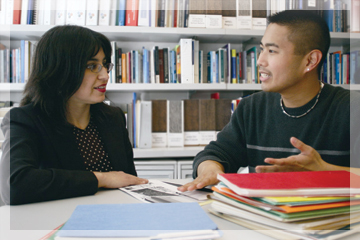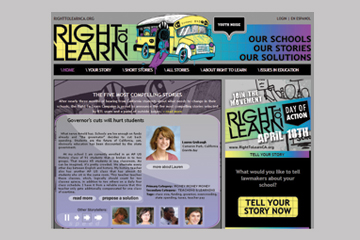Improving Achievement

With Hewlett Foundation funding, WestEd has undertaken a statewide study of instructional strategies used in California schools for improving English learners' achievement. Photo courtesy of WestEd.
Urban school students in low-income areas face daunting odds; the achievement gap is so large that it is not until the tenth grade that reading levels in the lowest income schools match fifth grade levels in the highest income schools. Reform efforts often fail to address this gap because they ignore one crucial component: improving classroom instruction. To improve the elements of instruction that directly affect student achievement—teacher and student interactions, time spent in school, and learning content—we concentrate our efforts in these areas:
Identifying effective reform practices that can be used in other school districts. There have been countless attempts to improve achievement, and many have failed. The Program’s goal is to evaluate a variety of projects that are being conducted to determine what works, and to share the results.
Encouraging personalized teaching. Research shows that assessing student progress, then personalizing instruction for students who are having trouble learning, can substantially increase achievement. We are making grants to find out what works best, and to help integrate good teaching practice into teachers’ daily instruction.
Increasing learning time in schools with lower achievement scores. Data suggest that lengthening the school day for low-income students will help them close the gap with middle-income schoolchildren. We are making grants to evaluate the effectiveness of increased class time.
Improving language development in K–3 for low-income students. At the kindergarten level, low-income children have a working vocabulary that is one-third that of middle-income students. By the age of nine, the difference becomes critical when students are expected to read and understand literature, science, math, and social studies textbooks. Our grantees are building a case for changing the curriculum to include intensive language development.
Improving Achievement Grants authorized in 2007.
2007 Highlights
In 2007, a number of school districts began experimenting on the best ways to adapt teaching to an individual student’s needs. The Foundation’s early investments have produced examples of how to apply this approach in virtually any classroom. The Foundation also helped support the launch of a new national center, the Center on Continuous Instructional Improvement.
The Foundation is pleased that our early investment in learning about the impact of increasing the school day has gained additional funders. The Broad and Gates foundations announced the extended learning day as one of three parts of their Strong American Schools campaign, and the Broad Foundation has since invested in two of our grantees to support policy and advocacy work on the issue. National attention has led to more examples of the practice being adopted in public schools and to a large number of inquiries from districts and schools seeking help in designing operational plans.
A review of our grants to support changing the way school districts approach instruction in San Diego, Los Angeles, Hayward, Boston, and East Palo Alto proves that a districtwide strategy focused on classroom instruction is feasible and potentially effective: San Diego and East Palo Alto schools have shown substantial increases in test scores that can be attributed to district-led reform. On the other hand, we have found that volatility in a school system—the political and labor contract disputes in Los Angeles and the Hayward Unified School Districts in 2007, for example—makes district-led grants a very risky investment, and we are exploring other ways to reliably improve achievement. We will phase out this grantmaking approach in 2008.
2008 Goals
- Continue research and development for extended learning time
- Build the case for changing curriculum in the early grades to enhance language development
For more information, please visit the Foundation Web site.




